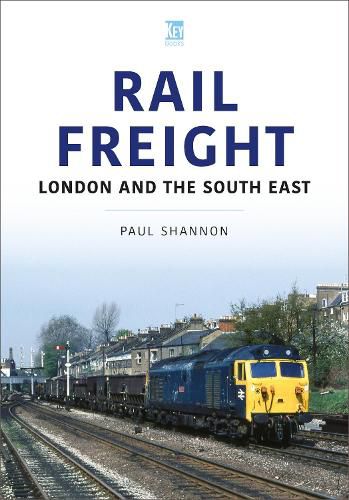Readings Newsletter
Become a Readings Member to make your shopping experience even easier.
Sign in or sign up for free!
You’re not far away from qualifying for FREE standard shipping within Australia
You’ve qualified for FREE standard shipping within Australia
The cart is loading…






The last four decades have seen many changes in rail freight patterns, as small-scale operations requiring shunting and trip working have given way to ever longer and heavier block trains. Construction traffic has increased year on year, with a wide variety of flows from the Mendips, Leicestershire and the Peak District, as well as from ports in the South East. Intermodal traffic has grown, too, despite the closure of Freightliner's two London terminals at Stratford and Willesden. On the other hand, oil trains from Thames Haven and Fawley are now a distant memory and steel traffic from Sheerness is no more. Several freight-only branches in Buckinghamshire and Oxfordshire have closed. Illustrated with more than 160 photographs, many of which are previously unpublished, this volume looks at the changing face of rail freight in London and the South East of England. It details the transformation in traction, rolling stock and railway infrastructure over four decades. AUTHOR: Paul's love of railways was triggered by taking the train to school in 1970. He developed a keen interest in rail freight and travelled widely to record the changing railway scene from the late 1970s onwards. He is the author or compiler of around 50 books, mainly covering different aspects of rail freight but also some general titles on railway history and infrastructure. He has also contributed more than 100 articles to enthusiast magazines and written around 40 DVD scripts, some covering railway operations in mainland Europe. 170 illustrations
$9.00 standard shipping within Australia
FREE standard shipping within Australia for orders over $100.00
Express & International shipping calculated at checkout
The last four decades have seen many changes in rail freight patterns, as small-scale operations requiring shunting and trip working have given way to ever longer and heavier block trains. Construction traffic has increased year on year, with a wide variety of flows from the Mendips, Leicestershire and the Peak District, as well as from ports in the South East. Intermodal traffic has grown, too, despite the closure of Freightliner's two London terminals at Stratford and Willesden. On the other hand, oil trains from Thames Haven and Fawley are now a distant memory and steel traffic from Sheerness is no more. Several freight-only branches in Buckinghamshire and Oxfordshire have closed. Illustrated with more than 160 photographs, many of which are previously unpublished, this volume looks at the changing face of rail freight in London and the South East of England. It details the transformation in traction, rolling stock and railway infrastructure over four decades. AUTHOR: Paul's love of railways was triggered by taking the train to school in 1970. He developed a keen interest in rail freight and travelled widely to record the changing railway scene from the late 1970s onwards. He is the author or compiler of around 50 books, mainly covering different aspects of rail freight but also some general titles on railway history and infrastructure. He has also contributed more than 100 articles to enthusiast magazines and written around 40 DVD scripts, some covering railway operations in mainland Europe. 170 illustrations